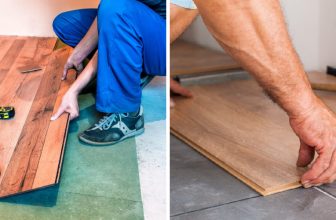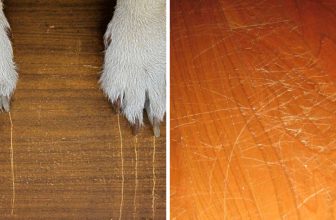How to Remove Vinegar Stains From Stone Flooring
If you have stone flooring in your home, you know how beautiful and durable it can be. However, if you ever spill vinegar on your floor, you may be concerned about how to remove the stains. Thankfully, there are a few ways to clean these stains away successfully.
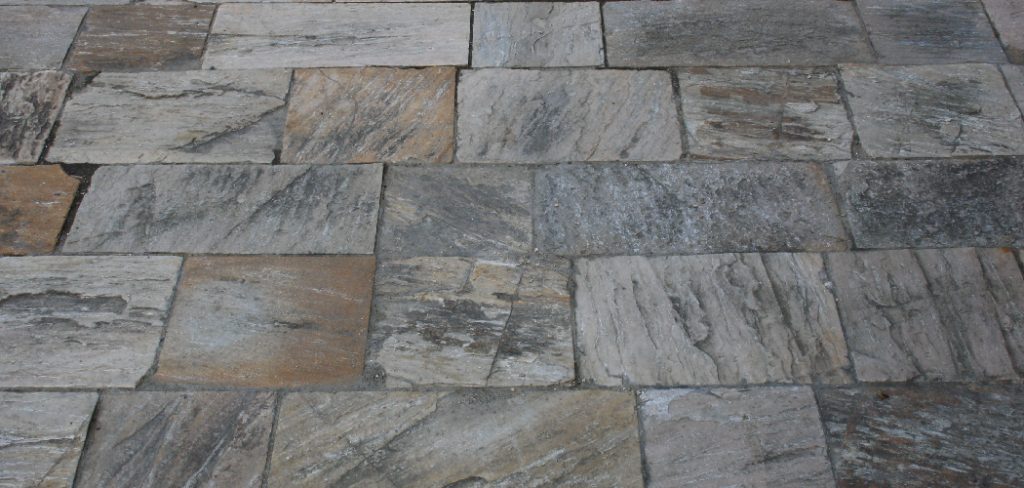
In this blog post, we will discuss some methods how to remove vinegar stains from stone flooring. We will also provide tips on preventing these stains from happening in the first place. So, we have you covered whether you are dealing with an existing vinegar stain or trying to prevent one from occurring! Read on to know more!
What is Vinegar?
Before we dive into the methods of cleaning vinegar stains from stone flooring, let’s first understand what vinegar is. Vinegar is a common household ingredient that is often used for cooking, cleaning, and even as a natural remedy for various ailments. It is made by fermenting sugars from fruits or grains with yeast and bacteria, producing acetic acid. This acidic quality is what makes vinegar effective for cleaning, but it can also cause damage if not used properly.
You may be wondering how vinegar can stain stone flooring when it is used for cleaning. Well, the acidic nature of vinegar can react with certain types of stone, causing discoloration or etching on the surface. This is especially true for natural stones like marble, travertine, and limestone.
Why Does Vinegar Stain Stone Flooring?
Now that we know what vinegar is made of, you may be wondering why it stains stone flooring. When acidic substances like vinegar come into contact with natural stone, they can react with the minerals in the stone and cause discoloration or etching. This is because natural stones, like marble and limestone, are made up of calcium carbonate, which is vulnerable to acid.
Additionally, some stone sealers may not be able to protect against acidic substances like vinegar. So, even if your stone flooring has been sealed, it may still be susceptible to staining from vinegar spills. The type of stone and sealer used in your flooring will determine the level of vulnerability to vinegar stains.
Needed Materials:
To successfully remove vinegar stains from stone flooring, you will need the following materials:
Baking Soda or Poultice Powder:
These can help absorb and neutralize the acidic properties of vinegar.
Soft Cloths or Paper Towels:
These will be used to blot and wipe away the stain.
Neutral Ph Cleaner:
This type of cleaner is safe for use on stone flooring and will help to balance the pH levels in the affected area.
Sponge:
This will be used to apply the cleaner onto the stain.
Warm Water:
To rinse off the cleaning solution and any residue from the stain removal process.
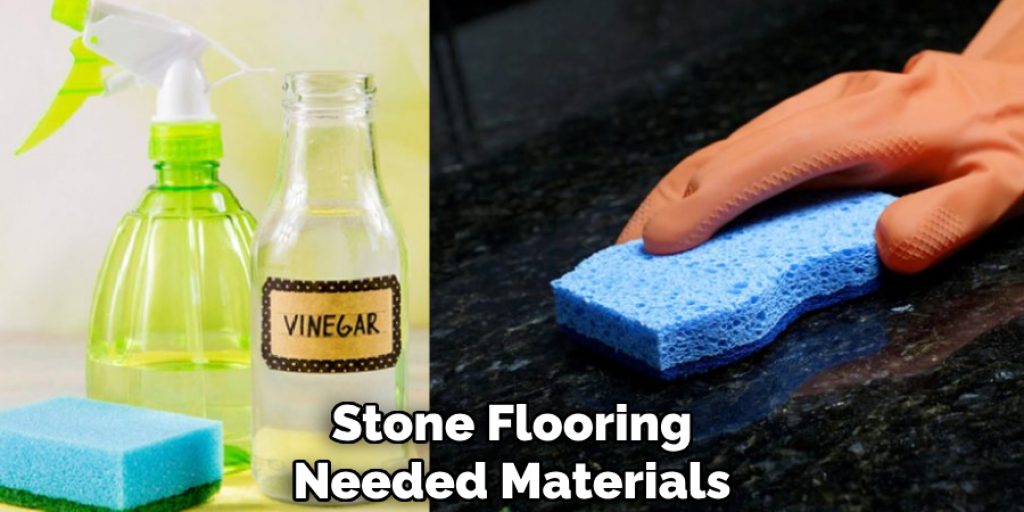
10 Effective Ways How to Remove Vinegar Stains From Stone Flooring:
1. Wipe Up the Vinegar Stain:
As soon as your child spills the vinegar on the stone flooring, quickly grab a paper towel or cloth to soak up as much of the spilled vinegar as possible. If you leave any of the spilled vinegar on the stone flooring, it will etch into the surface of your floor over time. Be sure to use a soft cloth or paper towel, as scrubbing too hard may worsen the stain.
2. Mix Water with Baking Soda:
Sprinkle some baking soda onto the stain. Then, pour a little bit of water on top of the baking soda. Next, use an all-purpose cleaner to scrub the liquid into the stone flooring, and then use another paper towel or cloth to wipe up all of the liquid. Although baking soda is abrasive, it works well to remove any etching that may already be on the stone flooring. The baking soda paste will reduce the acidity of the vinegar, making it easier to clean.
3. Scrub the Stain with an All-Purpose Cleaner:
Use a clean cloth, paper towel, or scrub brush to scrub the vinegar stain using an all-purpose cleaner. Continue scrubbing until you have buffed out all of the vinegar stains. Make sure that you use an all-purpose cleaner, not polish or wax. If there are any vinegar stains left on the stone flooring, the oils in the polish or wax will camouflage it. You will want to see the vinegar stain so that you can use the proper cleaner.
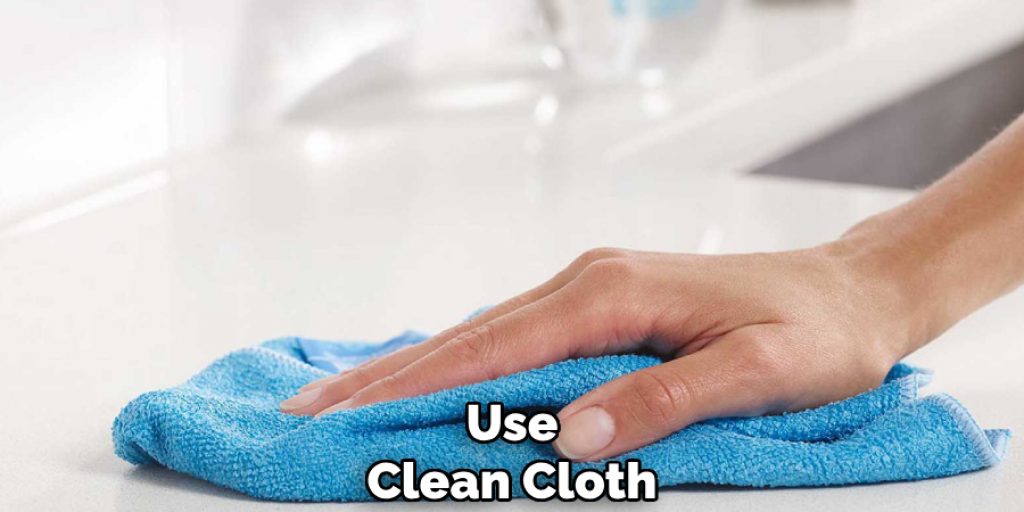
4. Stir Distilled White Vinegar into Hydrogen Peroxide:
Mix 3 parts hydrogen peroxide with 1 part distilled white vinegar. Set the mixture on top of the stone flooring. Scrub it into the stain using an old toothbrush or scrub brush. Depending on how bad the etching is, you may want to let this mixture sit on the etchings for several minutes before scrubbing them with your brush. You need to get rid of all of the vinegar for this method to work. But, if any vinegar still remains, it will dissolve into the hydrogen peroxide. The baking soda and water help to neutralize the pH level of the vinegar.
5. Use Toothpaste:
Dip a clean cloth into some plain white toothpaste and scrub it onto the stone flooring that is stained with vinegar. Wipe away any remaining toothpaste, then dip your cloth into fresh water and wipe the area again. Once the area is dry, buff it using a clean paper towel or cloth to shine it. Toothpaste is slightly abrasive, so it helps to remove the vinegar stains. You can use white toothpaste because it has a creamy texture and does not have any additives such as gel for whitening.
6. Wash It with Detergent:
Rinse out a sponge under some warm water and squeeze it out until there aren’t any bubbles left on the sponge. Then, sprinkle a little bit of dishwashing detergent onto the sponge and scrub it onto the stone flooring. Finally, wipe with a clean sponge dipped in warm water and blot dry with a paper towel or cloth. Dishwashing detergent is alkaline, which counteracts the acidic vinegar stain. It also helps to break up the stain for easier removal.
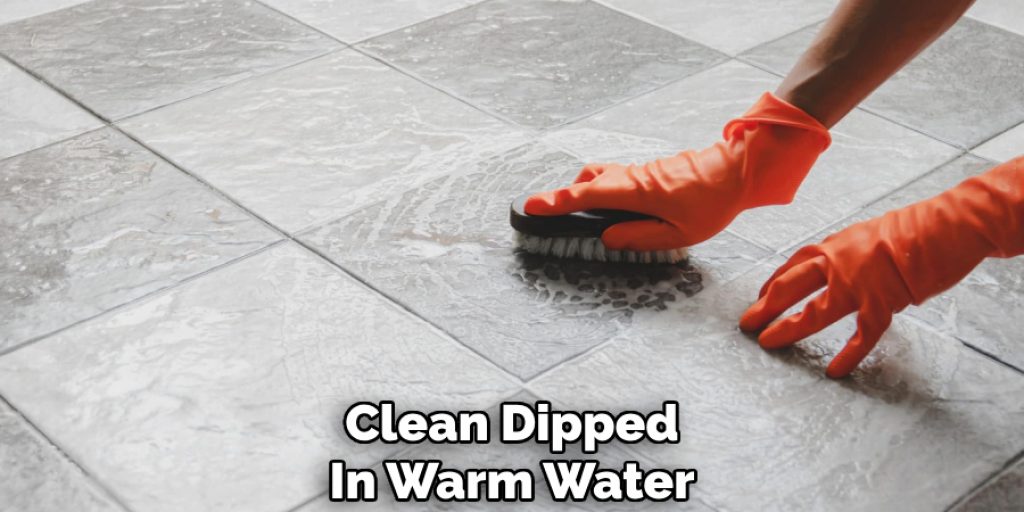
7. Mix Ammonia with Water:
Pour some ammonia onto a clean cloth or paper towel, and then use the cloth to scrub the stain again. Be sure to keep the stone flooring wet while scrubbing it with an all-purpose cleaner because this will help break down the stain more effectively. Once you have scrubbed away as much of the stain as possible, rinse the area with a little bit of water. If there is any etching on your stone flooring, buff it out using a clean cloth or paper towel. Ammonia is highly alkaline, which makes it useful for breaking down acidic stains like vinegar.
8. Use Salt to Neutralize vinegar:
If you spill white distilled vinegar, sprinkle salt on the spot right away and let it soak in for about 30 minutes before wiping with a damp cloth and allowing it to air dry. This will stop the bubbling and remove any vinegar stains left behind. After the process, always rinse with a neutral pH cleaner and water. You can also use a little bit of baking soda or poultice powder to help absorb and neutralize the vinegar.
9. Dab Some Liquid Hand Soap:
Spray the vinegar stain with some rubbing alcohol. Let it sit for about 20 seconds, then dab at the stain using a clean cloth or paper towel. Repeat this process several times (until all of the vinegar is gone) to remove any etching that may be left on your stone flooring. Make sure you aren’t using any liquid dishwashing soap when removing vinegar stains from stone flooring because liquid dish soaps have oils that will mask the vinegar etching. Liquid hand soap is a gentle and effective alternative.

10. Use a Clean, Dry Cloth to Absorb:
When you remove liquid vinegar from a surface, it has a tendency to spread out and soak into other areas, like the stone flooring. Use a clean cloth to absorb as much of the vinegar spill as you can. Then, repeat the blotting process until no more vinegar is left on your stone flooring. If you don’t have any paper towels or clean clothes nearby, you can also use a piece of newspaper. Just be sure to avoid scrubbing as this can spread and further set the stain into the stone flooring. After blotting up all of the vinegar, follow up by cleaning the area with soap and water to remove any remaining residue.
Following these steps can help you effectively remove vinegar stains from your stone flooring. It is important to act quickly and use the right cleaning methods to avoid etching and permanent damage to your floors. Regularly cleaning and maintaining your stone flooring can also prevent any buildup of acidic substances that could lead to staining.
Some Helpful Tips to Remove Vinegar Stains:
Here are some helpful tips on how to remove vinegar stains from stone flooring.
1. Apply a small amount of neutralizing cleaner to the stained area and let soak for an hour or more.
2. Scrub with a brush and rinse with clean water.
3. Apply some dry cleaning solvent to a clean white cloth and blot at the wax residue until it is removed.
4. Rinse again with clean water and allow to dry.
5. If the wax is not completely removed, re-apply solvent to a clean white cloth and once again blot to remove residue. Repeat if necessary until no more wax can be removed.
6. Finally, apply some mineral oil or floor wax remover with a clean white cloth and wipe it onto the stone surface, ensuring all wax is removed.
7. Allow the stone surface to dry and buff it with a soft, clean cloth to polish and shine the floor.
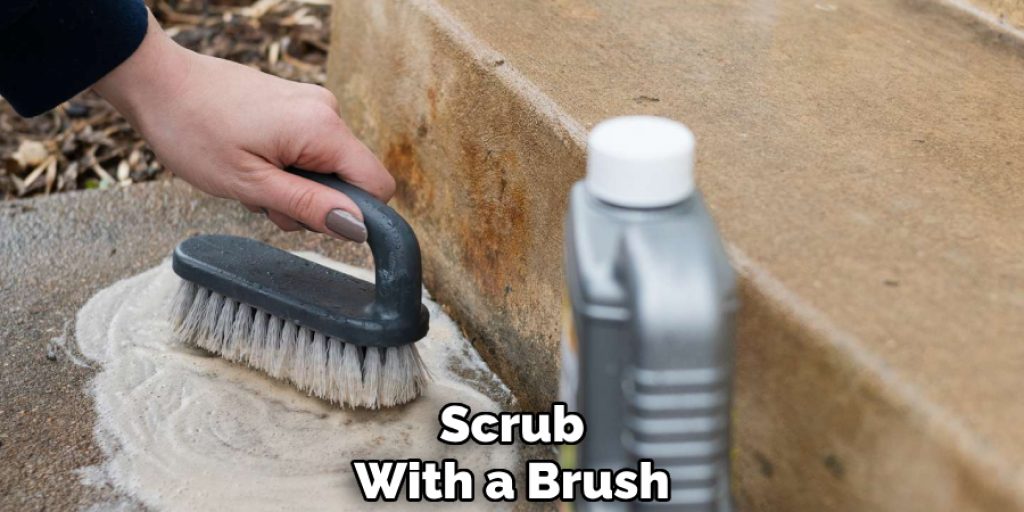
Does Vinegar Hurt Stained Concrete?
Apple Cider vinegar has a long list of uses, and removing stains from concrete appears to be one of them. Vinegar will darken the concrete when spilled on the floor, leaving behind an ugly mark. Even though it looks bad, you can easily remove stains from concrete with some apple cider vinegar and baking soda. If the stain is fresh, you can rub it out with a paper towel. If the spot is dry, sprinkle some baking soda over the vinegar stain and spray it with water to create a paste.
Let this sit for about 15 minutes before scrubbing it down. Then, scrub the area until all of the stains have been removed. Baking soda will neutralize any remaining vinegar, leaving the concrete clean and stain-free. To prevent this from happening in the future, you can coat your floor with a sealer after making sure it is completely dry. This will protect your concrete from any spills or stains that may occur.
How Do You Clean Polished Concrete Floors at Home?
Concrete floors are an increasingly popular choice of flooring in the home. They are particularly attractive for use in areas with a lot of traffic, such as hallways and kitchens. They can, however, get grubby fairly quickly if not cleaned regularly. And it’s not always easy to get them really clean again the professional way!
Vinegar can be used to clean concrete floors with good results. It is a natural product and comes in a diluted form for ease of use. However, it can cause some problems, depending on the polish that is already applied to the concrete floor.

Does Vinegar Discolor Fabric?
Vinegar is a natural acid and can help remove dirt and grime from many surfaces and items. While the strong smell of vinegar may not be ideal for certain applications, it can be used as a cleaning agent that will not produce any harsh by-products. In addition, vinegar is biodegradable and friendly to the environment.
However, it does have some drawbacks. If vinegar is allowed to sit on fabric or other porous surfaces, its acidity may cause discoloration of the weave over time. Many people wonder if vinegar will discolor fabric. The answer is yes, but it can be avoided with proper handling. To be safe, test any cleaning product containing vinegar on an inconspicuous spot of your fabric first.
Can Vinegar Ruin Clothes?
Vinegar is a mild acid that can break down certain stains. This includes some of the stains from food or drinks on clothing items. It’s safe to use vinegar to get rid of simple stains, such as fruit juice and sauces. However, not all stains will respond well to this kind of treatment. For example, vinegar can effectively remove some kinds of dirt, grass stains, urine, vomit, and blood. However, vinegar is not capable of completely removing many other kinds of stains.
Vinegar is a great household product due to its affordability and uses throughout any household. Vinegar, at its most basic level, is acetic acid, which is a mild acid. The word acid scares many people, but not all acids are that dangerous or scary. Acids have been used in some clean-up products and household cleaners for years with no problems.
Frequently Asked Questions:

Q1: Can You Use Apple Cider Vinegar on Stone Floors?
A: Yes, apple cider vinegar can be used to clean and remove stains from stone flooring. However, it is important to dilute the vinegar with water and test it on an inconspicuous area first to avoid any etching or damage to the stone surface. You can also use a neutralizing cleaner or soap and water to remove any remaining residue after using vinegar on stone floors. The key is to act quickly and properly clean the area to prevent permanent staining. You can also regularly clean and maintain your stone flooring to prevent any buildup of acidic substances that could lead to staining.
Q2: How Do You Remove Stains From Concrete?
A: To remove stains from concrete, you can use apple cider vinegar and baking soda. If the stain is fresh, simply rub it out with a paper towel. For dry stains, sprinkle baking soda over the vinegar stain and spray it with water to create a paste. Let this sit for 15 minutes before scrubbing it down. Repeat if necessary until all stains are removed. You can also coat your concrete floors with a sealer after they have dried to prevent future staining.
Q3: Is Vinegar Safe to Use on Polished Concrete Floors?
A: Vinegar can be used to clean polished concrete floors, but it is important to use diluted vinegar and test it on an inconspicuous area first to avoid any potential damage. The acidity in vinegar may cause discoloration or etching on certain types of polish, so it is best to take caution when using vinegar on polished concrete floors. Regularly cleaning and maintaining your polished concrete floors is also recommended to prevent any buildup of acidic substances that could lead to staining or damage.
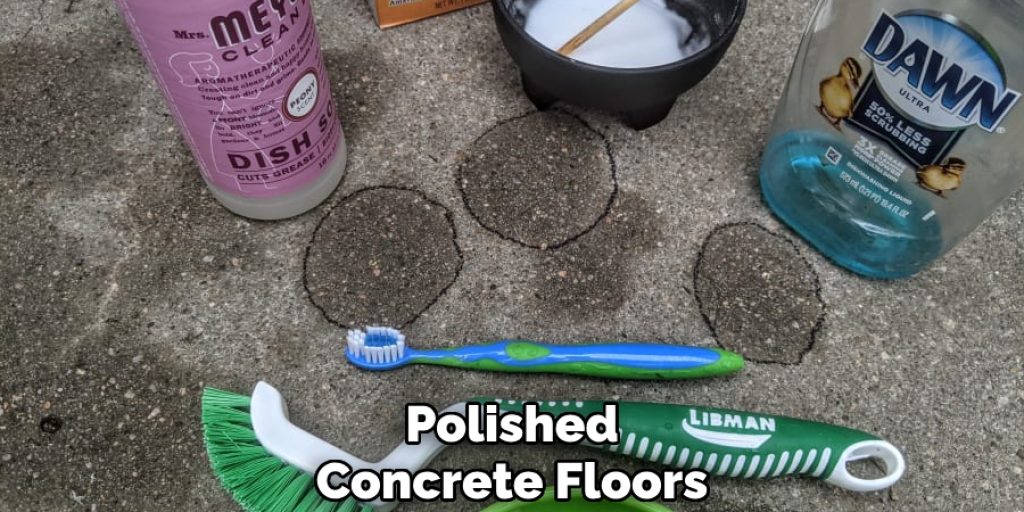
Conclusion:
Vinegar can be used to remove stains from stone flooring, but it is important that the vinegar does not come into contact with any other materials. This will avoid damaging them and ruining your floors in the future. To use this method for stain removal, you’ll need a bucket of hot water mixed with 1-2 cups of white distilled vinegar.
Pour some onto an old rag or cloth and scrub away at the stain until it’s gone! Be sure to test on an inconspicuous area before applying all over because prolonged exposure may result in staining even more than what was there originally. We hope this article on how to remove vinegar stains from stone flooring has helped you get rid of those pesky stains so you don’t have to worry about spills anymore when entertaining guests!
You can also check out to Remove Murphy’s Oil Soap From Hardwood Floors
You Can Check It Out to Remove Dark Stains From Hardwood Floors



